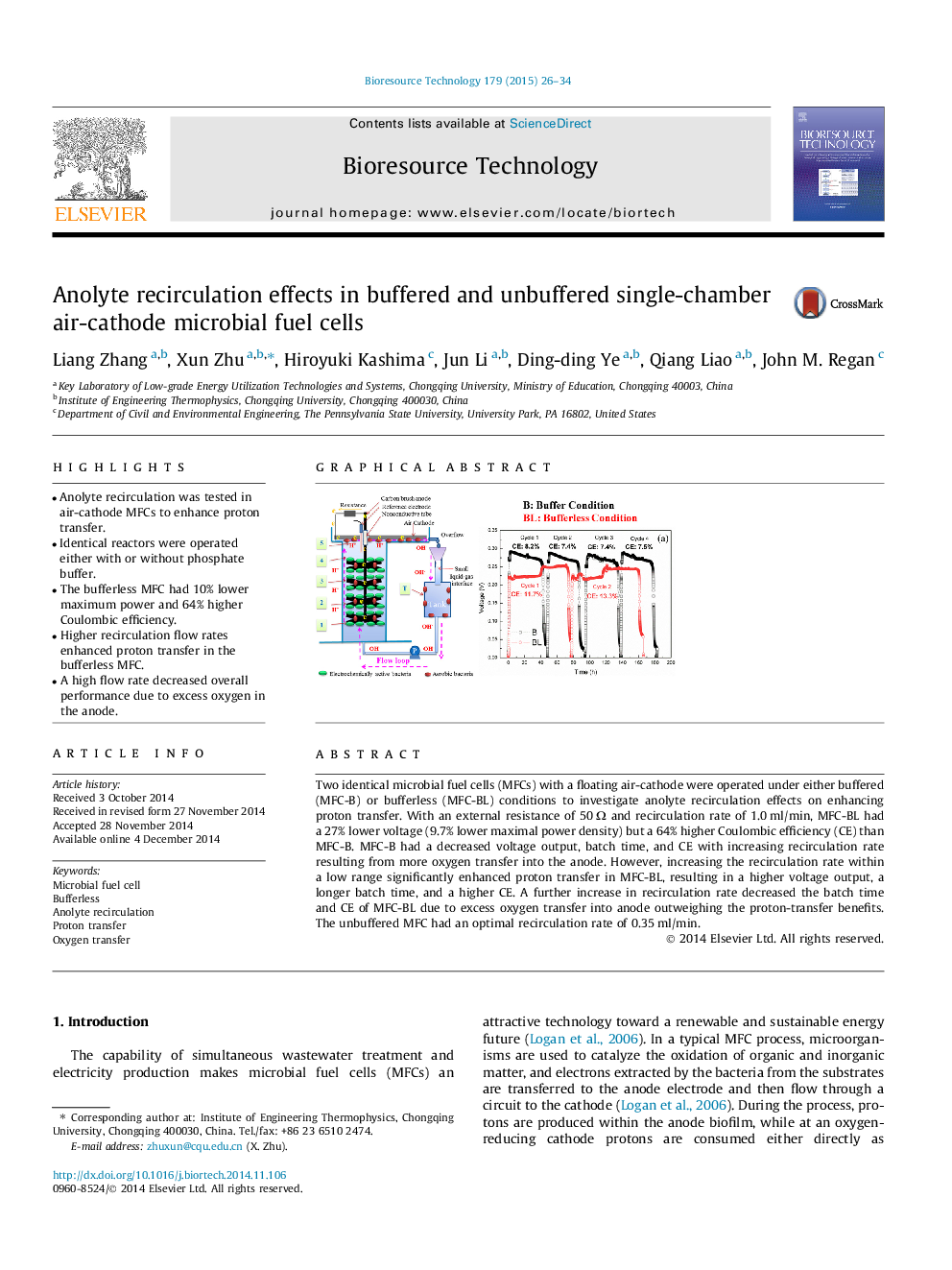| Article ID | Journal | Published Year | Pages | File Type |
|---|---|---|---|---|
| 680138 | Bioresource Technology | 2015 | 9 Pages |
•Anolyte recirculation was tested in air-cathode MFCs to enhance proton transfer.•Identical reactors were operated either with or without phosphate buffer.•The bufferless MFC had 10% lower maximum power and 64% higher Coulombic efficiency.•Higher recirculation flow rates enhanced proton transfer in the bufferless MFC.•A high flow rate decreased overall performance due to excess oxygen in the anode.
Two identical microbial fuel cells (MFCs) with a floating air-cathode were operated under either buffered (MFC-B) or bufferless (MFC-BL) conditions to investigate anolyte recirculation effects on enhancing proton transfer. With an external resistance of 50 Ω and recirculation rate of 1.0 ml/min, MFC-BL had a 27% lower voltage (9.7% lower maximal power density) but a 64% higher Coulombic efficiency (CE) than MFC-B. MFC-B had a decreased voltage output, batch time, and CE with increasing recirculation rate resulting from more oxygen transfer into the anode. However, increasing the recirculation rate within a low range significantly enhanced proton transfer in MFC-BL, resulting in a higher voltage output, a longer batch time, and a higher CE. A further increase in recirculation rate decreased the batch time and CE of MFC-BL due to excess oxygen transfer into anode outweighing the proton-transfer benefits. The unbuffered MFC had an optimal recirculation rate of 0.35 ml/min.
Graphical abstractFigure optionsDownload full-size imageDownload as PowerPoint slide
